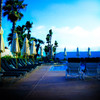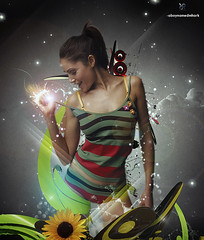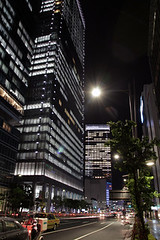The Oratorium of Gonfalone was the subject of my Italian Degree in Conservation Heritage Studies. Between 1999 and 2000 my dad was involved in the restoration of this beautiful cycle of frescoes.
Federico Zuccari
The Flagellation (1573)
Here a brief history:
The origins of the Company of the Gonfalone reassemble to the XIII century. It was the pope Clemente IV that, with "Brief" of 1267, officially the Company recognized. This, constituted then in Brotherhood, you/he/she was tightly connected with the work developed by the great religious Orders, and particularly those Agostinianos and Franciscan, so much that was St. Bonaventura from Bagnoregio the inspirer of the institution which seems also prescribed the white suit with the red and white cross in blue field.
The building, initiated just before 1550, it had integrally completed and decorated within the 1580. The simple façade to two orders was realized later some decades on project of the ticinese Domenico Castelli.
If notable it is the architectural structure, stamped to austere sobriety and recalling, even though in smaller dimensions, the noble vertical development of the most ancient Christian constructions; if rare and qualitatively valuable the wooden ceiling appears carved by Ambrogio Bonazzini.
Under the direction, in a first moment, of the parmense Jacopo Zanguidi, says the Bertoja and, subsequently, of other famous exponents of the culture of the time, the wall represent a great cycle of the Passion of Christ. The Company of the Gonfalone were used to organize numerous processions for various moments of the popular devotion including the evening of Friday Saint, beginning from 1489, a grandiose representation of the Passion of Christ near the church of the Pity (today destroyed) in the Colosseum, very famous event in the Rome of the time.
In one of the frescos, Federico Zuccari's Flagellation, the memory of the theatrical action is explicit in how much the figures of the Christ and its executioners are situated in a sort of stage above which it opens a curtain.
As in the Sistine Chapel Sistina by Michelangelo, also in the oratory of the Gonfalone the events of the sacred history are accompanied by the presence of the Prophets and the Sibilles work of the same authors that decorated the panels.
The story develops from the fund of the right (in comparison to who enters) wall to the fund of the left wall, according to a right run to the left that it corresponds to the natural movement of the reading.The frescos are framed by columns twisted inspired them to the columns vitinee of St. Pietro that was said to originate from the Temple of Salomon.
The first panel, finished in 1569, it is the Entry of Christ to Jerusalem of the Bertoja, artist protected by the cardinal Alessandro Farnese. The figuration is overhung by the figures, also performed by the Bertoja, of the prophet Zaccary and of the Eritrean sybil.
It follows the Last Supper of Livio Agresti from Forlì, overhung from a non recognizable prophet and from the sibilla Samia, flanked by figurines, you also insert within niches them not well decipherable.
The following panel is the Prayer in the garden by Domenico di Modena. It follows the Capture of Christ by Marcantonio dal Forno conceived as a suggestive nighttime, surmounted by a prophet and a sibilla of the Bertoja, not identified, but flanked by two figurines, within niches, representing Judith and David.
The Christ in front of Caifa of Raffaellino Motta, said Raffaellino from Reggio, great protagonist of the painting of the time, prematurely disappeared. Also in this case the prophet and the sibilla impending they are not identified.
The cycle proceeds with the Flagellation by Federico Zuccari, dated 1573 and surmounted by a prophet and a sybil, always of Zuccari, flanked by the allegorical figure of the Charity. From the panel of Zuccari it changes the point of view of the frescos, according to an idea probably elaborated by Marco Pino da Siena, now conceived according to the principle of di sotto in su'.
The Crowning of Spinas by Cesare Nebbia, overhung by a prophet and a sybil by Matteo da Lecce, placed side by side by two allegorical figures within the niches that could be interpreted as Justice and Martyrdom.
The panel on the following wall and the Ecce Homo of Caesar Nebbia, surmounted by a prophet and a sibilla not identified, also by Nebbia. It follows the Slope of the Calvary by Livio Agresti, overhung by a prophet and a sybil, of the rural same, not identified, flanked by the allegorical figures of the Pain and the Compassion.
This panel represents the Crucifixion. It is the more damaged. The author seems identifiable in Guidonio Guelfi, known for his collaboration in Vatican to Matteo da Lecce and elsewhere to Livio Agresti.
The Deposition of the Cross is perhaps work of a follower of Daniel da Volterra, identifiable as Giacomo Rocca, even if the work would seem performed by more hands. The impending prophet is identifiable with Isaia while the sybil is not identified.
The last panel is the Resurrection of Christ by Marco Pino, most probably datable to 1572.
This cycle remains one of the most representative in Rome.
All these photos were taken while I was studying and some of them were used for my presentation.




























No comments:
Post a Comment